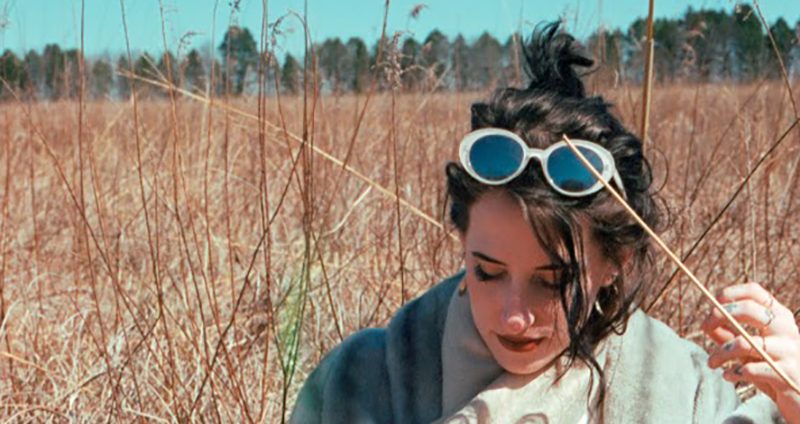In design programs, like the one where I first met Brooke Armstrong, there is always the requisite debate about “what is graphic design?” Some argue that graphic design is “visual communication.” While I’m in favor of language that elevates the field, it requires more than a resumé edit to truly be a visual communicator. You need to have a point of view. And, while how you “communicate” clearly matters; having something to say is essential.
For Armstrong, the field of graphic design and illustration is a full-contact sport. She plays with an open heart, a curious mind, and the courage to share both her body of work and lived experiences. Her mad skills are equal only to her determination. She loves the work, which she approaches with the sense of play she has managed to hold onto since childhood. But Armstrong is also passionate about social justice, and the need to reframe our conversations about mental health. Her superhero power is using art to do good in the world. She is an artivist.
I reached out to the Champaign-Urbana native to learn more about the work I’ve been admiring on her Instagram, ask what makes for a successful freelancer, and to get the scoop on her latest venture, working with Buy Black Chambana. It comes as no surprise that this exceptional visual communicator is also a great storyteller. I hope you enjoy our conversation. And when you’re done, head over to Armstrong’s website and Insta to see the magic for yourself.
Smile Politely: What drew you to graphic design and illustration?
Brooke Armstrong: I would say I’ve always been a creative. I won my first photography award as a kid. I liked messing around with different mediums and always took some kind of art class at school. (They were the only classes I would get good grades in, to be honest.)
My exposure to design started around high school when I took my first design class and toured my cousin’s office at Ogilvy & Mather’s in Chicago. She majored in design at the U of I and has found a lot of success in her work. I‘ve always admired what she does and I fell in love with design pretty quickly after that. At Parkland, my professors specifically, kinda finalized my obsession with it and I don’t think there was a year I was taking classes that I didn’t win a couple awards at the Student Show. I’m just a crazy workaholic and graphic design nerd and I guess that was good enough to get me noticed.
SP: How would you describe your illustration style?
Armstrong: Fluid. (I like to try out a lot of different styles and come back to the ones that I resonate with.) Colorful. A little playful. Geometrical. A lot of the time my personal work serves as a way for me to release some kind of emotion or thought on my mind. I had such a hard time voicing my real thoughts as a kid. Art was one of the earliest forms of communicating my feelings. I think a lot of artists can relate.
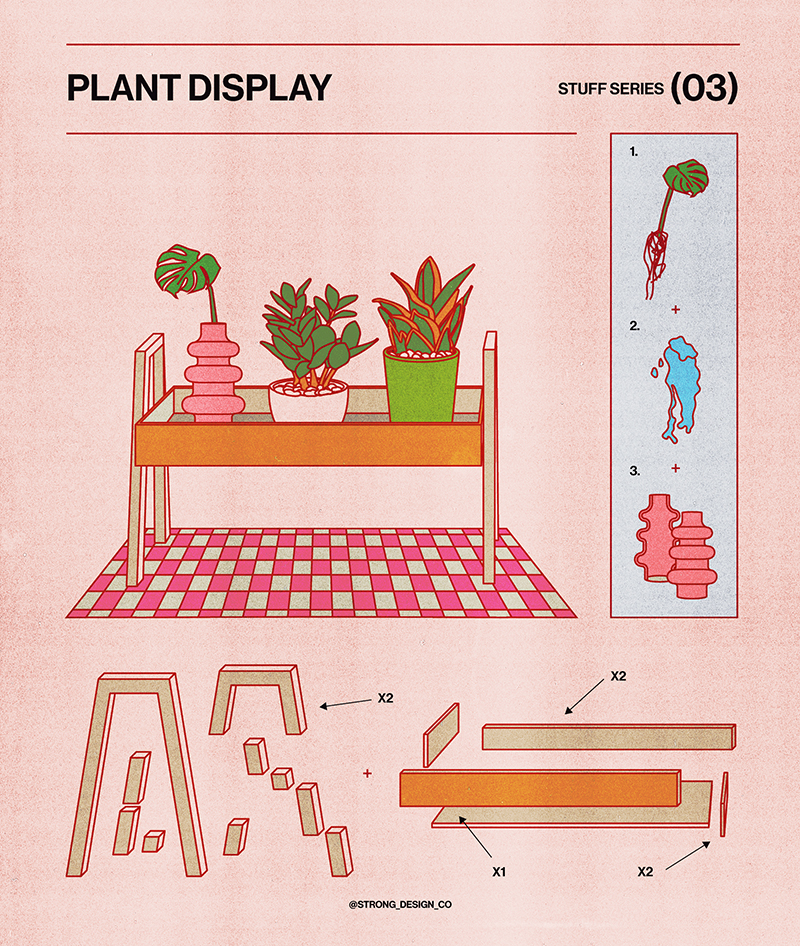
Image by Brooke Armstrong/Strong Design Co.
SP: What inspires you?
Armstrong: Good music and a lot of weed. Ha! I also have this community of artist friends online and locally. They serve as some of my biggest inspirations. Besides that, who’s to say? Anything and everything. I have this “inspiration archive” with hundreds of photos of things that inspire me. Paint colors, pin buttons, store signs, curvy branches. I keep a plastic tub of packaging and menus and catalogs (I just look like I’m obsessed with trash). I like to go junkin’ at our local thrift spots (learned from Aaron Draplin) and see what old typography and design I can find. Inspiration is literally everywhere, you just have to capture when it hits you and keep a good collection to fall back on when you aren’t feeling it.
SP: Who are some of your favorite artists and designers and what have they brought to your own work?
Armstrong: April Greiman was an early influence for me. I was really drawn to her out-of-box design and crazy, intense color palettes. Malika Favre is a genius when it comes to geometrical shapes and I regularly go back to her work for guidance. I’m also a huge fan of Crystal Zapata, a Chicago-based designer, and could only ever wish to create compositions as lovely as she does. I find a lot of inspiration in her typography skills. The rest of us can only try, right?
SP: Describe your process?
Armstrong: My process follows more or less the same guidelines that most designers are taught: research, inspiration, concept sketching, revising, final, revising. I spend the most time in the research/concept sketching phase. That’s why a project can take three+ weeks. We’re spending that time trying out the hundreds of different possibilities to find the best solution for the problem. Sometimes you get lucky and inspiration hits you really fast. But an important part of the process is all the time spent not working so your brain can rest and think.
SP: As someone who has continued to work freelance in a pandemic, what has that been like?
Armstrong: Honestly, not too different from pre-covid. Any local gigs were restricted to online meetings and emails. But besides that, most of my work was online-based anyways.
SP: What are the biggest challenges and rewards of working freelance?
Armstrong: I think keeping the work consistent can be a challenge. Sometimes I’ll go months without work (which is why I’ve always had another job) and then I’ll get a bunch of jobs all at once. Even then, projects can last a long time and payments can be spotty. Advocating for yourself and your price can also be an intimidating part, especially for artists first starting out.
The rewarding parts are when you get finished with a job, the client is happy, you’re happy, and hopefully, you’re proud of the work you did.
SP: What makes for a successful freelancer?
Armstrong: Being able to find pride in your work. Sure, the money can be nice. But at the end of the day, you’re creating something that will be put into the world. Hard work, time management, persistence, self-discipline, and I think above all wanting to find a creative solution. Designers are problem solvers.
SP: What’s the best design advice you’ve received? Or, put differently, what advice do you give young and emerging designers and illustrators?
Armstrong: Ooo, that’s a tough one. One quote I find myself going back to is “Learn the rules like a pro, so you can break them like an artist.” a saying (unfortunately) attributed to Pablo Picasso. Maybe that’s just an excuse to justify all my poor design decisions, haha.
Something that I’ve heard a lot and something I tell new artists is, make the work you want to see. Make the work for yourself and not someone else. You’ll enjoy it so much more, you’ll care about it so much more, you’ll create more original work (which is almost impossible), and do it enough, people will notice your passion and support you for you.
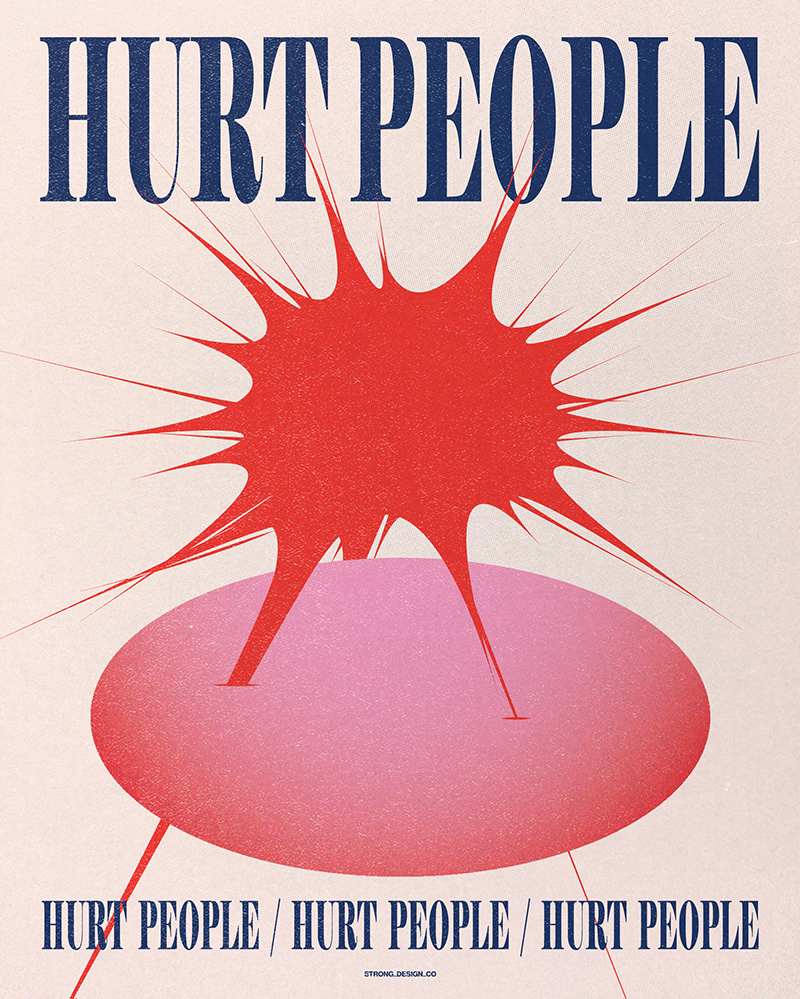
Image by Brooke Armstrong/Strong Design Co.
SP: Congratulations on your new gig working with Buy Black Chambana! Can you tell us a bit about what you’ll be doing? What are your goals? What appealed to you about this opportunity?
Armstrong: Thank you! I absolutely love my new position at Buy Black Chambana. Mariah and I make a perfect team. She brought me on as the social media specialist, so I’ll be doing designs and helping with that side of things. The opportunity came at the perfect time for me. I had just quit a job that was poor for my mental health and had no idea what I would be doing. I saw that she was hiring and had this ‘aha’ moment. Being able to combine my skills with my passion for helping and making the community a better place was like a dream. And we both want to see Buy Black Chambana grow to the potential we know it has. Lots of exciting things are happening this summer!
SP: As someone who’s been following your work for a while, I’ve been fascinated by the recent illustrations focused on reframing mental health issues. They are really powerful examples of visual communication as activism. What inspired them? Do you have any plans for them beyond sharing them on social media?
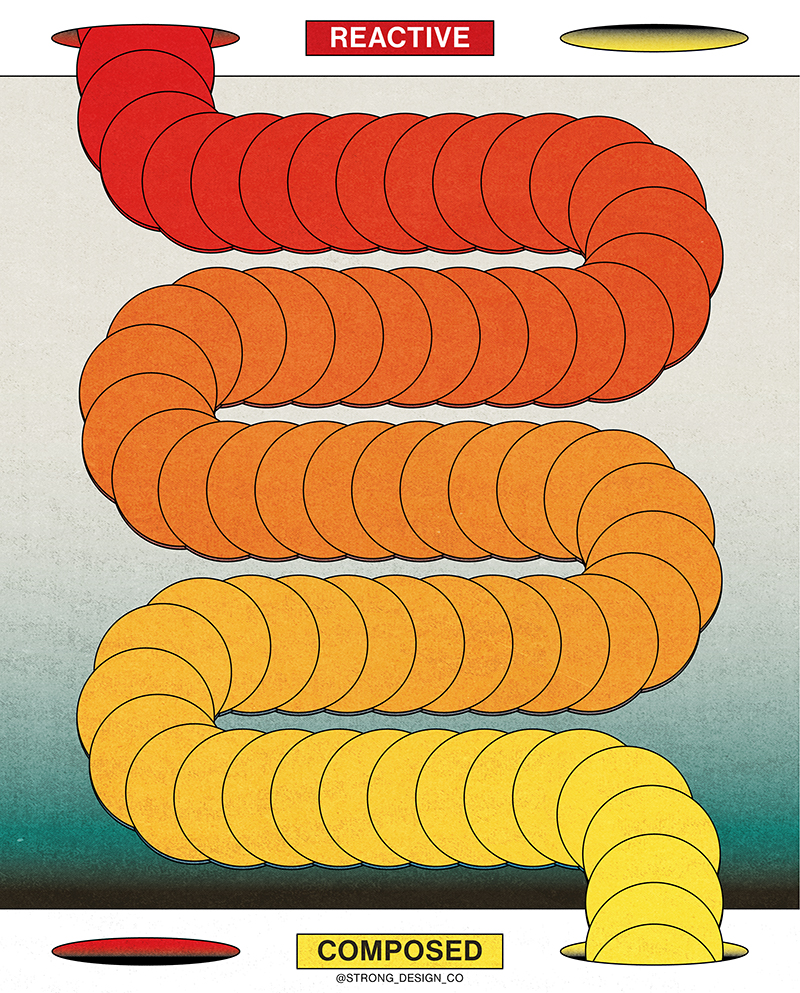
Image by Brooke Armstrong/Strong Design Co.
Armstrong: Thank you! I’ve always been an advocate for mental health. Mental illness runs in my family and I’ve battled with my own since I was a kid. The more we talk about it, the more we erase the stigma surrounding mental health. And I think people respond better to visually pleasing things. Graphic design is literal visual communication. That and a combination of desperately wanting people to understand how I was feeling. Making visual art just kinda made sense to me.
Hmm, plans. As for the work itself, maybe selling prints in the future! But I’m happy to share that by posting this kind of art, I got the opportunity to design a luxury loungewear line focused on mental health for a client. I don’t know how much more I can say now, but I’m sure I’ll be releasing that soon.
SP: How would you describe our local design community?
Armstrong: Very supportive! I love our design community. I’ve been on the board of CUDO (the Champaign-Urbana Design Organization) since the end of 2019 and we have a lot of plans for the future. We’ve been on a bit of a hiatus, COVID hit all of us pretty hard, but we want to come back strong. If you’re interested in art and design, I definitely recommend keeping an eye out.
SP: How can our readers learn more about your work?
Armstrong: My website is strongdesignco.com, but I post regularly on Instagram at strong_design_co
If you follow, don’t be afraid to say hi!
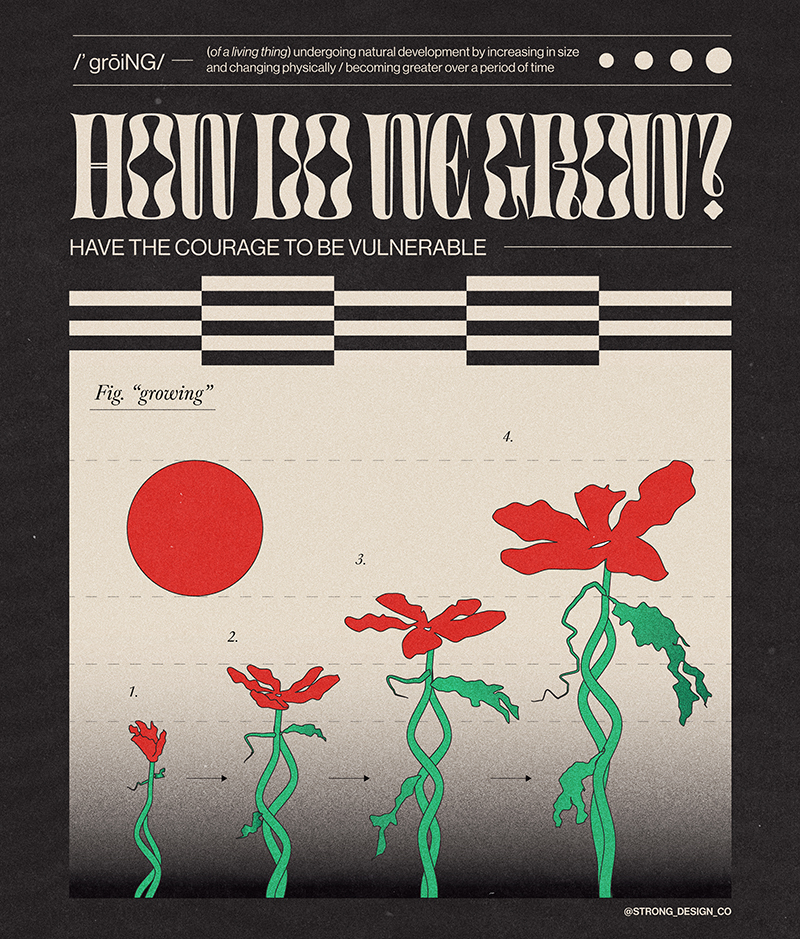
Image by Brooke Armstrong/Strong Design Co.
SP: Anything else you’d like to share?
Armstrong: I think art is incredibly therapeutic and so important. Especially now. People have this untapped creative energy in them that directly relates to their childhood. I think every person is born with the desire to create. It’s in our nature. Humans are artists. Being creative has been a defining characteristic of humans since the beginning of time. It’s not until we get our crayons and blocks taken away after kindergarten and told to focus on something else is when we start to lose that.
Making art is the purest form of yourself, it’s incredibly vulnerable. That scares a lot of the people that may at one point had the desire to create. If you’ve ever felt that way, I highly encourage you to dive deeper. Pretend you’re that kid again and create something with absolutely no judgment to yourself. It’s freeing.








